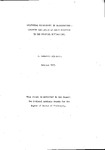SEQUENTIAL EXPERIENCES IN ARCHITECTURE: COMPUTER SIMULATION OF HUMAN RESPONSE TO THE PHYSICAL ENVIRONMENT
| dc.contributor.author | Mckennan, G | |
| dc.contributor.other | School of Art, Design and Architecture | en_US |
| dc.date.accessioned | 2013-09-16T12:26:56Z | |
| dc.date.available | 2013-09-16T12:26:56Z | |
| dc.date.issued | 1977 | |
| dc.identifier | NOT AVAILABLE | en_US |
| dc.identifier.uri | http://hdl.handle.net/10026.1/1762 | |
| dc.description.abstract |
The importance of the sequential experience of architecture has long been recognised by architects. Section 1 outlines some of the ways this has been done in the past and sets the present work in its architectural context. Section 2 discusses the environmental factors and the dynamic thermal regulatory mechanisms involved in predicting people’s responses to changes in the thermal environment. Section 3 describes previous attempts at simulating the regulatory mechanisms involved, using control system equations. Fanger's model is discussed in this section to illustrate the limitations of models that ignore the body's regulatory actions. Section 4 is new work and is a discussion of the problems associated with applying one of the models outlined in section 3 to the simulation of human motion through buildings. The modifications made to the model are described. Section 5 is also new work. Previously, simulation of people's transient responses by models has been validated by laboratory studies (see sections 2 and 3). Section 5 describes the recording and analysis of people's transient responses from two studies within buildings. Predictions by the model are validated by this data. | |
| dc.language.iso | en | en_US |
| dc.publisher | University of Plymouth | en_US |
| dc.title | SEQUENTIAL EXPERIENCES IN ARCHITECTURE: COMPUTER SIMULATION OF HUMAN RESPONSE TO THE PHYSICAL ENVIRONMENT | en_US |
| dc.type | Thesis | |
| plymouth.version | Full version | en_US |
| dc.identifier.doi | http://dx.doi.org/10.24382/3745 | |
| dc.identifier.doi | http://dx.doi.org/10.24382/3745 |
Files in this item
This item appears in the following Collection(s)
-
01 Research Theses Main Collection
Research Theses Main


